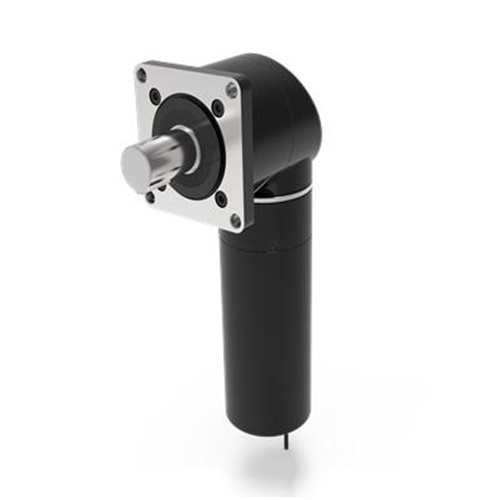Precision Redefined: The Evolution of Planetary Reducers
2024-08-24
Precision Redefined: The Evolution of Planetary Reducers
Table of Contents
- 1. Introduction to Planetary Reducers
- 2. What Are Planetary Reducers?
- 3. A Brief History of Planetary Reducers
- 4. How Do Planetary Reducers Work?
- 5. Types of Planetary Reducers
- 6. Applications of Planetary Reducers in Various Industries
- 7. Advantages of Using Planetary Reducers
- 8. Future Trends in Planetary Reducer Technology
- 9. FAQs About Planetary Reducers
- 10. Conclusion
1. Introduction to Planetary Reducers
In the realm of mechanical engineering and automation, **planetary reducers** stand as pivotal components that redefine precision and efficiency. These devices, essential in a variety of applications, offer unparalleled advantages in speed reduction, torque amplification, and space-saving design. Understanding the evolution of planetary reducers allows us to appreciate their significance and foresee their future in advanced technologies.
2. What Are Planetary Reducers?
Planetary reducers, also known as planetary gear systems, are gear train mechanisms that consist of a central sun gear, multiple planet gears, and a ring gear. This unique arrangement allows for smooth power transmission while minimizing vibration and noise. The **gear ratios** can be designed to achieve various levels of speed reduction, making them ideal for applications ranging from robotics to automotive industries.
Key Features of Planetary Reducers
- **Compact Design**: The configuration of planetary gears allows for a smaller footprint compared to traditional gear systems.
- **High Efficiency**: Planetary reducers typically provide higher efficiency levels, reducing energy loss during operation.
- **Load Distribution**: The design distributes load evenly across multiple gears, enhancing durability and performance.
3. A Brief History of Planetary Reducers
The concept of gear reduction dates back to ancient civilizations, but the modern **planetary reducer** originated in the 19th century. Notably, the industrial revolution spurred advancements in machinery, leading to the refinement of gear systems for improved efficiency. The introduction of **automated assembly lines** further necessitated the development of compact and efficient gearing solutions, giving rise to the widespread use of planetary reducers in various sectors.
Milestones in the Evolution of Planetary Reducers
- **Early 1800s**: Initial designs of gear systems are implemented in machinery.
- **Mid-1900s**: The advent of high-speed production techniques leads to the refinement of planetary gear designs.
- **Late 20th Century**: Technological advancements enable the integration of computer-aided design (CAD) in the production of planetary reducers, enhancing precision and manufacturing efficiency.
4. How Do Planetary Reducers Work?
Planetary reducers operate on the principle of gear ratios, which are determined by the number of teeth on each gear. The sun gear drives the planet gears, which rotate around it while engaging with the ring gear. The configuration allows for a high torque output while reducing the input speed.
Understanding Gear Ratios
The gear ratio is significant in determining the output speed and torque. For instance, a gear ratio of 4:1 means that for every four rotations of the input, the output will make one complete rotation. This ratio can be finely tuned to meet the specific requirements of applications, enabling precise control over speed and torque.
Torque and Efficiency
The efficiency of planetary reducers typically ranges from 90% to 98%, depending on the design and materials used. This high efficiency is a direct result of the load distribution across multiple gears, minimizing wear and maximizing performance.
5. Types of Planetary Reducers
There are several types of planetary reducers, each designed to cater to different industrial needs:
1. Low-Backlash Planetary Reducers
These reducers are designed to minimize backlash, making them ideal for precision applications such as robotics and CNC machinery.
2. High-Torque Planetary Reducers
These are engineered to handle high loads and are commonly used in heavy machinery and automotive applications.
3. Compact Planetary Reducers
These models emphasize space-saving designs, making them suitable for applications with strict size limitations.
4. Custom Planetary Reducers
Manufacturers can create tailored solutions to meet specific requirements, ensuring optimal performance for unique applications.
6. Applications of Planetary Reducers in Various Industries
Planetary reducers find applications across numerous industries, demonstrating their versatility and efficiency.
1. Automotive Industry
In the automotive sector, planetary reducers are pivotal for electric vehicles (EVs) and traditional combustion engines, enhancing torque output and improving fuel efficiency.
2. Robotics
Robotic systems utilize planetary reducers for precise motion control, allowing for accurate positioning and movement in manufacturing and surgical applications.
3. Aerospace
Planetary reducers are crucial in aerospace engineering, providing reliable performance in aircraft systems, ensuring safety and functionality.
4. Industrial Machinery
From conveyor systems to heavy-duty machinery, planetary reducers improve operational efficiency, reducing downtime and maintenance costs.
7. Advantages of Using Planetary Reducers
The adoption of planetary reducers comes with several notable advantages:
1. Increased Efficiency
The high efficiency of planetary gear systems minimizes energy loss, leading to reduced operational costs.
2. Compact Size
Their compact design allows for integration into tight spaces without sacrificing performance.
3. Low Maintenance Requirements
The durability and robust construction of planetary reducers result in lower maintenance needs, enhancing reliability.
4. High Load Capacity
Planetary reducers can handle significant loads, making them suitable for demanding applications.
8. Future Trends in Planetary Reducer Technology
As technology progresses, the future of planetary reducers looks promising. Innovations in materials and manufacturing processes are likely to lead to even more efficient and durable designs.
1. Smart Planetary Reducers
The integration of IoT technology within planetary reducers could enable real-time monitoring, predictive maintenance, and enhanced operational efficiency.
2. Lightweight Materials
Utilizing advanced lightweight materials will enhance performance while reducing overall weight, crucial for applications in aerospace and automotive industries.
3. Enhanced Customization
With advancements in manufacturing technology, we can expect even greater customization options for planetary reducers, allowing for bespoke solutions.
9. FAQs About Planetary Reducers
1. What is the primary function of a planetary reducer?
The primary function of a planetary reducer is to reduce the input speed while increasing torque, making it suitable for various applications.
2. How do you determine the appropriate gear ratio for a planetary reducer?
The appropriate gear ratio can be determined by considering the required output speed and torque specifications of the application.
3. What industries utilize planetary reducers?
Planetary reducers are widely used in automotive, robotics, aerospace, and industrial machinery sectors, among others.
4. Are planetary reducers maintenance-free?
While they are designed for low maintenance, some periodic checks and lubrication may still be necessary to ensure optimal performance.
5. What are the benefits of using low-backlash planetary reducers?
Low-backlash planetary reducers provide precise control and positioning, making them essential for applications where accuracy is crucial.
10. Conclusion
The evolution of planetary reducers signifies a profound journey of innovation, catering to the ever-increasing demands of modern industries. Their unique design and functionality not only enhance performance but also pave the way for advancements in technology. As we continue to explore new materials, designs, and applications, the future of planetary reducers is set to redefine precision once again. By leveraging the unique advantages they offer, industries can achieve greater efficiency and reliability in their operations, ensuring that they remain competitive in an increasingly demanding market.
Related news
Anhui High Precision Gear Transmission Co., Ltd
Chuzhou High Precision New Energy Techonology Co., Ltd
language
English
العربية
বাংলাদেশ
Български
Hrvatski
Česky
Dansk
Nederland
 Esperanto
Esperanto
Slovenski
Filipino
Suomi
Français
Maori
 Shqiptare
Shqiptare
Georgian
 Euskara
Euskara
Deutsch
Ελλάδα
ישראל
इंडिया
Magyarország
Ísland
Indonesia
Irlanda
Italia
日本語
Sovensko
Հայաստան
한국
Kyrgyz
ປະເທດລາວ
 Zulu
Zulu
Latvian
Lithuanian
Luxembourgish
 Latinus
Latinus
Macedonian
Малайская
Maltese
Монгол улс
 Cymraeg
Cymraeg
ဗမာ
 தமிழ்
தமிழ்
नेपाल
Norge
ایران
Polska
Portugal
România
Российская
Србија
 Slovak
Slovak
Србија
 Slovak
Slovak
Bosanski
Slovenian
Беларус
España
Sverige
Точик
ประเทศไทย
Türk
Azərbaycan
Uzbek
 Afrikaans
Afrikaans
Việt Nam
Sales frontline:
Contact: Joanna
WhatsApp:8613989800585
E-mail: info@dxtlexp.com
Copyright © 2022 Anhui High Precision Gear Transmission Co., Ltd | Business license | Powered by www.300.cn | SEO







